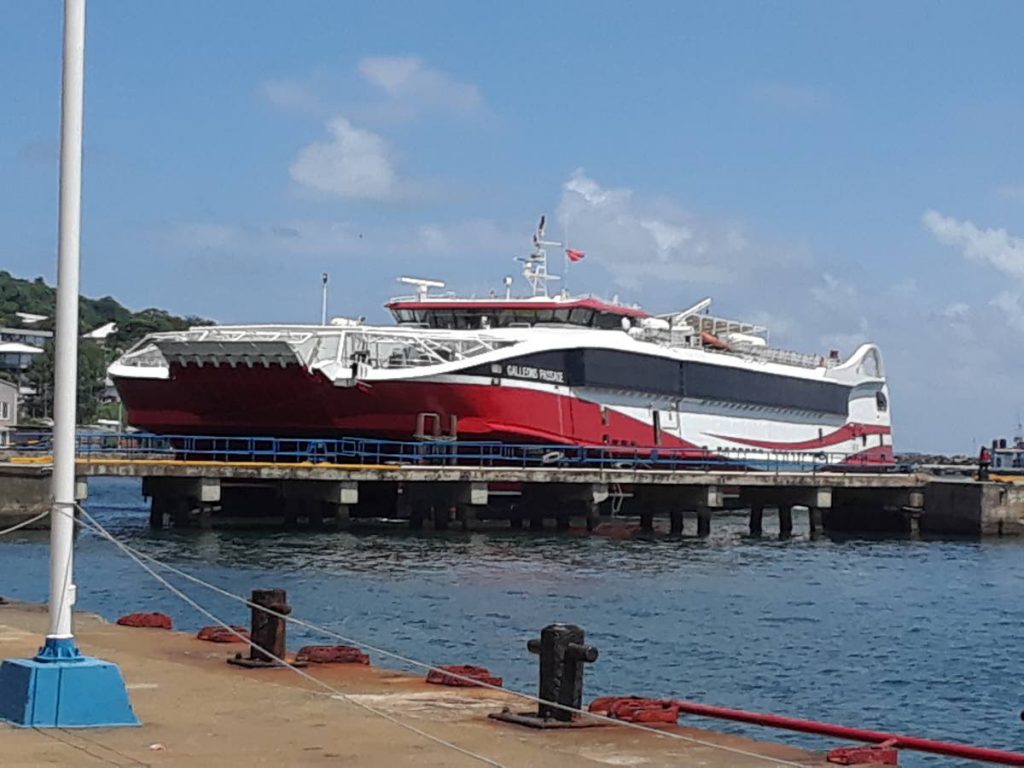Galleons fails to dock bow on

JENSEN LA VENDE and ELIZABETH GONZALES
THE Galleons Passage is safe to travel on, Transport Minister Rohan Sinanan said yesterday after the vessel made a trial return trip to Tobago, which was completed in close to eight hours.
The vessel left Port of Spain before 6.30 am yesterday and took four and a half hours to arrive in Tobago. It took some 20 minutes to dock from the bow and could not complete the process because the ramp did not reach the ground, so the crew could not disembark.
The vessel left Tobago around 1.15 pm and took one hour less to arrive in TT.
Sinanan’ said: “Today’s (yesterday’s) trial was about the speed and safety. That is why they tried to dock bow-on. They wanted to check the bow could dock, which would have been easier to load and offload cargo.
“The vessel can dock stern-on, like all other vessels, but with the additional feature of being able to dock bow-on, we wanted to try that, but it couldn’t and it docked stern-on.
“The trial was to see the safety and speed and Nidco felt it was successful. It is safe to go to Tobago on the boat.”
Port Authority of TT (PATT) chairman Lyle Alexander, who was on board during the test, said the sailing was smooth and reported no complications. Alexander said after the crew suggested that the boat dock stern-on after the failed attempt at docking bow-on, the captain made an attempt and then headed back to Trinidad, as he decided the vessel needed a bow thruster.
Alexander said: “It was a safety reason, not a ramp issue. So they need to look at a bow thruster to give the vessel the kind of power the captain wants, and once that is done we will be coming back to Tobago.”
A bow thruster is a type of propeller-shaped system fitted on either the bow or part of the vessel to make it more manoeuvrable. No date for the vessel to return to Tobago was given, but Sunday Newsday was told when the vessel returns with the bow thruster, only then it will make a second attempt at using the stern ramp to dock.
One port official explained after observing the issue with the size and height of the ramp that another solution would be for the port to build another ramp to reach the height of the vessel’s ramp, if the second ramp is impractical. He explained usually when buying a vessel, it is important to source a vessel that matches the specifications of the port and not the other way around.
The $17.4 million boat arrived on July 16, 145 days after it left China.
The long-awaited vessel finally sailed into its home port of Port of Spain around 11 pm, docking at the Cruise Ship Complex.
On July 17, during a media tour, Sinanan had said he expected the boat to be put on the seabridge “within the next two weeks,” helping to pick up the slack during the busy vacation period, since there is only one dedicated passenger vessel, the TT Spirit, on duty.
The Cabo Star, which also runs the inter-island route, is a cargo vessel not registered for passengers. There is still no date when the vessel will be put into use for passengers.


Comments
"Galleons fails to dock bow on"